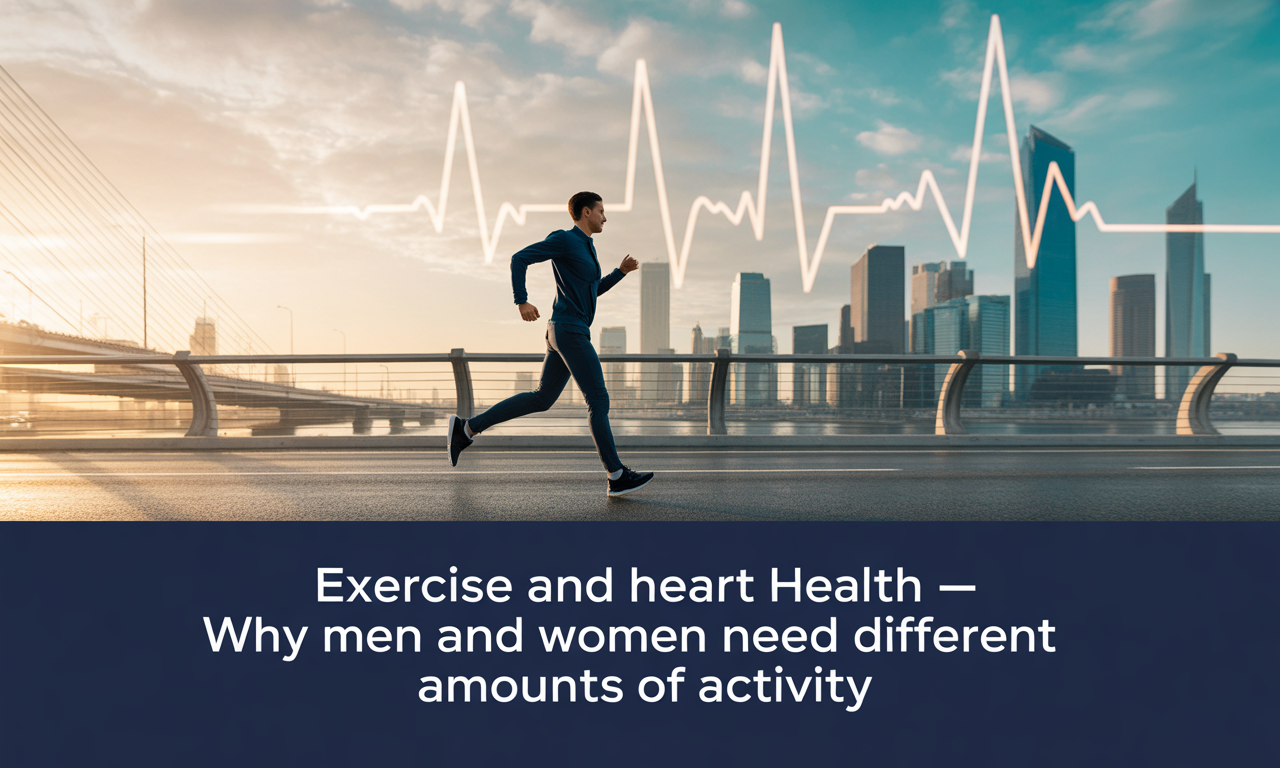Exercise and Heart Health: Why Men and Women Need Different Amounts of Activity
Beginner | November 6, 2025
✨ Read the article aloud on your own or repeat each paragraph after your tutor.
New Study Highlights Exercise and Heart Health Differences
How Much Exercise Do You Really Need?
A recent study found that men may need twice as much exercise as women to lower heart disease risk, offering new insight into exercise and heart health. Researchers analysed data from more than 80,000 adults and discovered that while women who exercised about 250 minutes per week saw a roughly 30% reduction in coronary heart disease (CHD) risk, men needed around 530 minutes per week to achieve a similar benefit. (The Guardian)
Different Results for Men and Women
In practical terms, women who met the general guideline of around 150 minutes of weekly exercise had a 22% lower risk of CHD, while men following the same guideline showed only a 17% reduction. The study, published by the American Heart Association, challenges long-standing assumptions about equal fitness recommendations for both sexes. (Yahoo News)
Why Might This Be Happening?
The Science Behind the Difference
Researchers suggest that physiological differences—such as hormonal variations, muscle composition, and metabolism—may explain why women seem to benefit more from moderate levels of exercise. Estrogen, for example, plays a protective role in women’s cardiovascular systems, potentially giving them an edge in exercise and heart health. (The Guardian)
Rethinking Exercise Guidelines
The findings also highlight the need to revisit the “one-size-fits-all” approach to global fitness guidelines. While exercise benefits everyone, the data show that women may achieve more efficient heart protection from smaller amounts of physical activity. In contrast, men appear to require longer or more intense sessions to reach the same level of cardiovascular benefit. (Healthline)
What This Means for Busy Professionals
Turning Research into Real-World Action
For busy professionals, the study offers valuable perspective. It suggests that men may need to find ways to increase their total exercise time throughout the week, even in short bursts. Simple adjustments like walking during breaks, biking to work, or adding an extra workout session could help meet those higher targets. Women, on the other hand, might take this as motivation to maintain consistency, since smaller amounts of exercise still yield meaningful results.
Building Consistent Habits for Long-Term Health
Health experts agree that any physical activity is better than none. The key is sustainability—building routines that fit a demanding lifestyle. For professionals balancing meetings, deadlines, and travel, small consistent efforts can add up over time. Regular activity not only reduces heart disease risk but also improves mood, energy, and focus—benefits that translate directly to workplace performance.
Vocabulary
- Coronary heart disease (CHD) (noun) – heart disease caused by blockage of the coronary arteries.
- Example: “The study tracked CHD incidents over seven years.”
- Physiological (adjective) – relating to the body’s normal functions.
- Example: “Differences in muscle fibres are physiological factors.”
- Metabolism (noun) – the chemical processes in the body that maintain life.
- Example: “Faster metabolism may help women respond better to exercise.”
- Bang for your buck (idiom) – getting good value or effect for the effort or cost.
- Example: “Women might be getting more bang for their buck from exercise.”
- One-size-fits-all (adjective) – designed to suit everyone equally.
- Example: “The current guidelines might be too one-size-fits-all.”
- Segment (noun) – a part of something divided or separated.
- Example: “Break your workout into segments across the day.”
- Brisk (adjective) – quick and energetic.
- Example: “Go for a brisk 30-minute walk.”
- Manageable (adjective) – able to be handled or controlled easily.
- Example: “Set manageable exercise goals each week.”
- Insight (noun) – a deep or clear understanding.
- Example: “This research gives insight into tailored exercise advice.”
- Networking (noun) – making connections with people for business or professional benefit.
- Example: “Use the research insight as a networking topic at events.”
Discussion Questions (About the Article)
- Were you surprised that men may need twice as much exercise as women to reduce CHD risk? Why or why not?
- How might busy professionals adjust their exercise routines in light of this study?
- What practical steps can someone take if they can’t hit 500+ minutes of exercise a week?
- How could the idea that “one-size-fits-all guidelines may not work” influence corporate health programmes?
- How could you talk about this research in a business English conversation or meeting?
Discussion Questions (About the Topic)
- Should fitness guidelines be adjusted separately for men and women? What are the pros and cons?
- In your company or culture, how are exercise and heart health discussed (or not)?
- What barriers do you face in getting enough weekly exercise? How might you overcome them?
- How does understanding body differences improve your English vocabulary and discussion ability in a workplace context?
- How might this research influence how you plan your lifestyle around work, travel, and health over the next year?
Related Idiom
“Go the extra mile” – to make more effort than is expected.
Example: “If men may need twice as much exercise as women, it’s time to go the extra mile for heart health.”
📢 Want more tailored tips like this? 👉 Sign up for the All About English Mastery Newsletter! Click here to join us!
Want to finally Master English but don’t have the time? Mastering English for Busy Professionals is the course for you! Check it out now!
Follow our YouTube Channel @All_About_English for more great insights and tips!
This article was inspired by: The Guardian and Yahoo News


